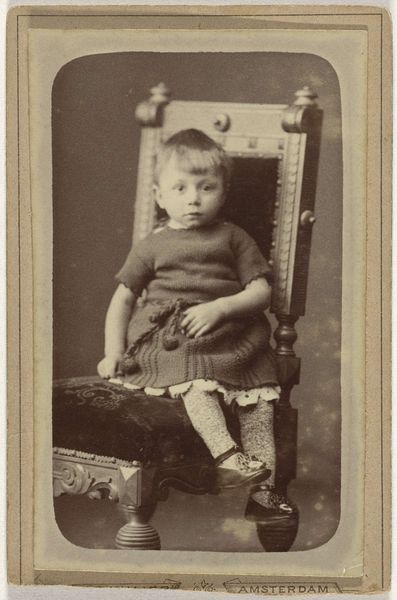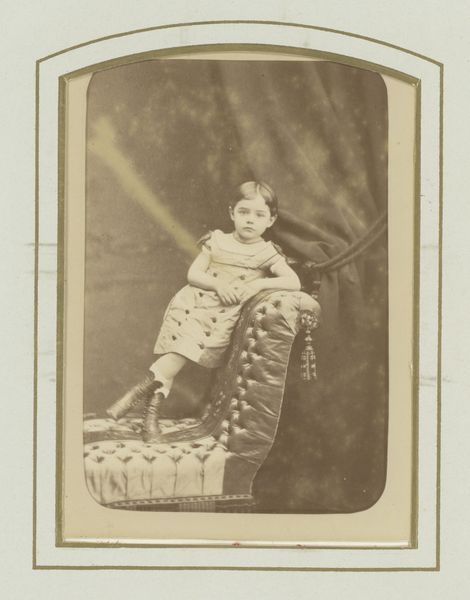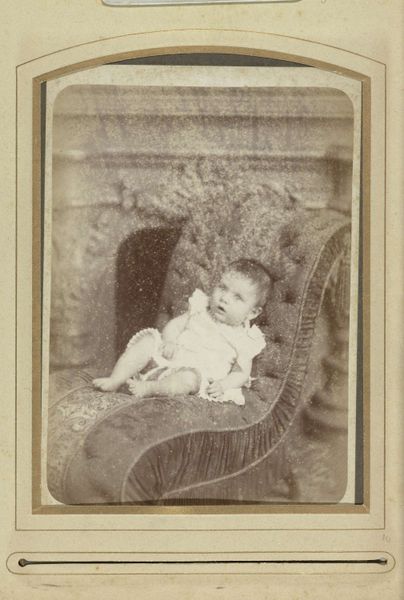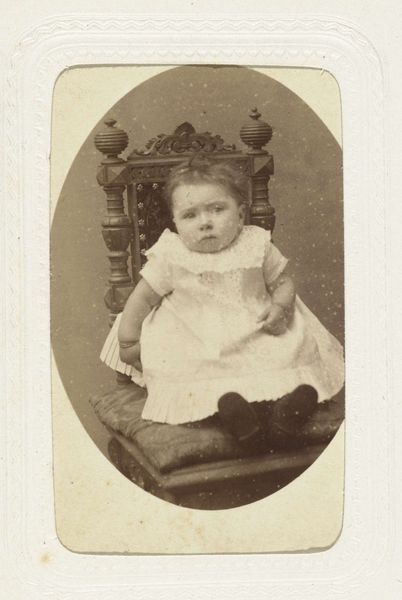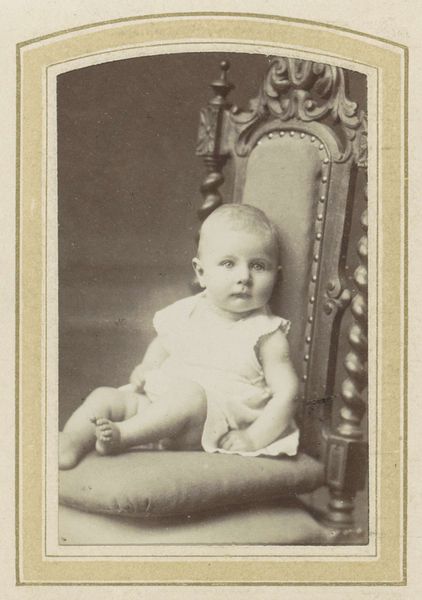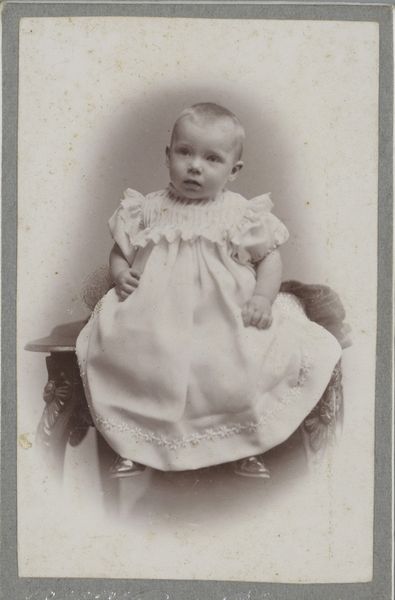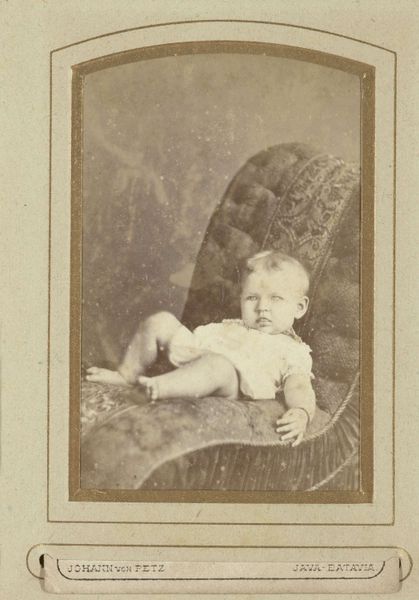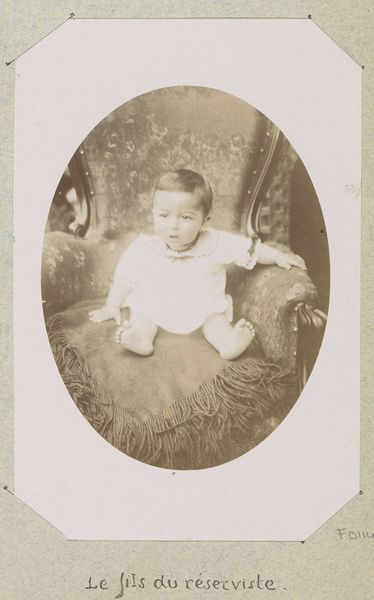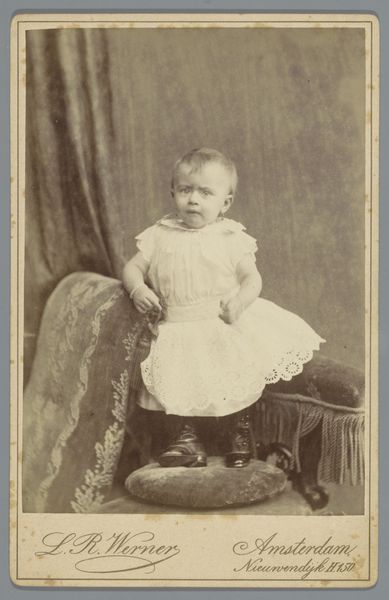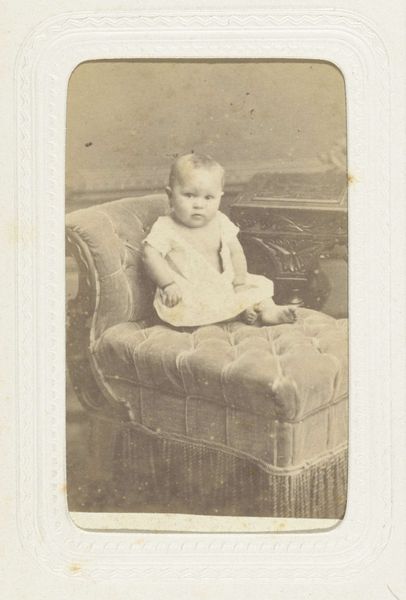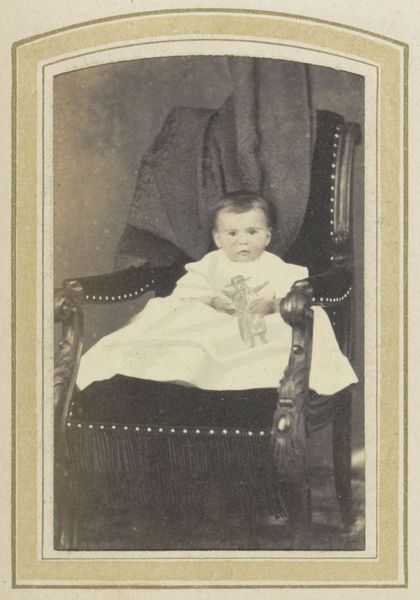
Studioportret van H. de Lange als klein kind zittend in een stoel 1890 - 1910
0:00
0:00
photography
#
portrait
#
photography
Dimensions: height 136 mm, width 100 mm, height 165 mm, width 109 mm
Copyright: Rijks Museum: Open Domain
Curator: Isn't this just darling? The portrait, taken somewhere between 1890 and 1910 by Woodbury & Page, captures little H. de Lange perched in what looks like a throne. It’s sepia-toned, feels a little like a faded dream. Editor: The chair, or throne as you say, dominates. It is deeply buttoned and seemingly crafted from a heavy textile. Look at those scuffed little boots! What were they made from? This is all about what people wear, sit upon, and value. Curator: Precisely! It's as if the weight of expectation—the stiffness of the chair, that almost severe little face—is pressing down. I wonder what sort of future the parents of H. de Lange envisioned. It's a strangely weighty image for a child, no? Editor: And consider the work, Curator, the time taken! Someone meticulously posed H. de Lange, arranged the light... and look, a photographer duo operating in Java! It reveals how studio photography reached the colonies. Was it about class aspirations then, perhaps? Curator: Good question. Or it could be a souvenir, a way to bridge continents with this photographic memory… there's a wistful beauty despite that somewhat serious expression. He's suspended there, between innocence and the expectations of adulthood. Editor: Perhaps the photograph flattens any innocence that remains and packages him into an item to be consumed, to signify a sort of achievement, of material possessions? Who would view it, I wonder? Curator: What a thought! This really captures the complex intersection of childhood, material culture, and, oh, the quiet poetry embedded within that long-ago gaze. I suddenly wonder what happened to H. de Lange… Editor: For me, it sparks thoughts about colonial economies, of photography's impact on societal representations across continents, on commodities of childhood. Thank you, H. de Lange, for your unknowing contributions to all of that.
Comments
No comments
Be the first to comment and join the conversation on the ultimate creative platform.

